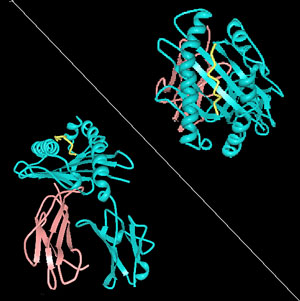



Taking the Initiative

The CFI with it’s multidimensional program has set new standards for privately funded research efforts.
From Simmaron to Mt. Sinai to Dr. Montoya’s Stanford group we’ve been more and more blessed with privately funded initiatives on ME/CFS in recent years, but no one is doing it on the scale of the Chronic Fatigue Initiative. Just two years after they showed up on the scene, their biobank is more comprehensive, their epidemiological studies are larger and they are probing more areas than just about anyone.
When the CFI laid out a lunch and used it to go over their results thus far it was not to be missed.
Our Framingham?
“This is the Framingham of ME/CFS” Dr. Komaroff
The Framingham studies having been probing the medical data of the community of Framingham, Massachusetts since 1948. Our understanding of the effects of exercise, diet, aspirin, and smoking on heart disease and stroke came directly out of them. Ongoing studies on dementia, osteoporosis, arthritis, diabetes, eye disease, cancer, and the genetic patterns of many common diseases have continued to yield insights.
Dr. Komaroff called the CFS Biobank, the big CFS database created by the Chronic Fatigue Initiative (CFI), the “Framingham of ME/CFS”. The CFI has collected a multitude of specimens (PBMC, rectal swab, saliva, tears, blood serum and plasma, urine) and epidemiological data (4,000 variables) from rigorously described ME/CFS patients from sites across the United States. They’ve also collected and processed “tremendous amounts of longitudinal data” from the ME/CFS experts. That suggests they’ve been scanning patients records dating back many years into their database.
The CFI and its investigators have been moving fast. Dr. Klimas reported that the five sites and the CFI Biobank squeezed five years of work into just two as they built the Biobank, and completed the first round of studies.
The CFI’s Biobank is a resource for the present, but more importantly it’s a resource for the future. With the samples they’ve banked they should be able to come back when the need arises to quickly assess the validity of future breakthroughs. With patient enrollment being the most expensive part of most studies, the savings from these already-enrolled patients should be substantial.
The CFI has also opened their data up to other researchers. Of course the question is and has been, “if you build it will they come?” The ME/CFS research community affiliated with the CFI has definitely begun building it.
BioBanks Galore
Biobanks are ‘in’ in the Chronic Fatigue Syndrome research community. With the announcement of Montoya’s 200 person biobank, we’re almost swimming in biobanks; there’s the CFIDS Association Biobank, the NIH Biobank, the CFI Biobank, the NSU Biobank, the Peterson/Simmaron Biobank, the WPI’s Biobank, the UK Biobank, and I may be missing a few. Many are hooked up with sophisticated data capture programs like RedCap which allow for easy data analysis.
A few years ago we didn’t have any, and now we’re crawling with them. You can scratch Biobank’s off the list of the ME/CFS research community’s infrastructure needs.
How much they’re being used is another question. The CFIDS Association’s Biobank appears to be going well with five outside investigators as well as their own investigators using it. One outside investigator (Dr. Houghton) believes he may have found a biomarker and a novel pathogen in a subset of patients. Two more are looking at autoimmunity and antibodies (one to the nervous system and brain including the dorsal root ganglia). That study carries the enticing note that similar autoantibodies have been found in Lyme disease.
Dr. Peterson’s spinal fluid samples from the Simmaron Research Foundation’s Biobank have been used in several studies. (Peterson hung onto his spinal fluid samples for years until he found labs (Columbia, NCNED) he trusted) Except for Simmaron Research’s Tick and Arthropod study, however, the NIH’s Biobank, after its initial usage, appears to have been untouched. Stating that we have samples and we have funding, Executive Director Scott Carlson of the Chronic Fatigue Initiative almost seemed to be imploring investigators to apply for and use the CFI’s specimens.
My guess is that they’ll be used a great deal and will be a great asset as time goes on. The ME/CFS researcher community built it and they will come, and when they do we’ll learn a lot more, faster than we would have if we didn’t have them.
The Chronic Fatigue Initiative Sets Its Priorities
The CFI, funded by the Hutchins Family Foundation, methodically looked at the different possibilities (including sleep, neuroendocrine issues and psychology) and set three areas to focus on: pathogens, immunology, and, in something of a surprise, mitochondria.
- The Lipkin study did not find pathogens, but may not be the last word in pathogens, after all. He continues his search for bugs in the gut.
- Immunology – the CFI has gotten more bang for its buck from immunology than pathogens thus far.
- Mitochondria – The mithave received little sustained research, but which studies in the brain and the muscles suggest could be involved. Later in the conference overviews we’ll check out a poster looking at mitochondrial myopathy patients who had similar exercise findings to ME/CFS patients.
I would’ve put in a plug for a focus on the autonomic nervous system and exercise, but it’s good to see a high-powered research organization digging into the mitochondria.
Epidemiology I: the Big (Big) Study
The people in the CFI’s Biobank aren’t necessarily your typical patients. Dr. Peterson threw his immune subset in there, and other doctors probably included their more severely ill patients. Indeed, all the patients were reported to be severely ill; 99% had PEM and most met the Canadian Criteria.

The vitality scores were of the ME/CFS patients were three times lower than those obtained from a chronic heart failure study.
Their vitality scores from the SF-36 were alarmingly low — a mere 14.5 compared to 77 for the healthy controls. It’s hard to wrap one’s head around such a low vitality score; to get a sense of how low that score is in the medical arena, the vitality scores of German chronic heart failure patients were 45.6 –three times that of the ME/CFS patients. Their physical functioning score (36) was almost 50% lower than found in heart failure patients (57), and was a third of the the score of healthy controls (95%)
The CFI Biobank clearly contains some very ill patients.
Women Take the Biggest Hits (Again …)
If you’re a woman you’re pretty used to bad news on this blog (:)) and here’s some more: women tended to have more severe cases of ME/CFS and more severe symptoms in every way. Women, unfortunately, don’t appear to be spared anything in this disorder; they have worse fatigue, worse PEM, worse pain — worse everything.
Onset Matters – Somewhat
It appears that onset matters; the more ‘acute’ the onset; i.e., the more rapidly it comes on, the more inflammatory symptoms you are likely to have. It makes sense that an acute infectious onset might produce more inflammatory symptoms (presumably symptoms like fever, lymph node enlargement, muscle aches, headaches). On the other hand acute onset was linked to more severe disease (i.e., more severe early symptoms predicted longer disease duration).
The finding that people who had been ill for shorter periods of time have more autonomic symptoms suggested that autonomic issues tend to get a bit better over time.
The finding that cognitive complaints were as troubling as fatigue was rather stunning given the incredible fatigue present in this disorder. It suggests a) the cognitive studies, which generally find ‘mild’ abnormalities, are missing something (as one Japanese study suggested) or b) the cognitive studies do not include this subset of patients, and c) understanding the neuro-cognitive manifestations of this disorder is critical.
Factor Analysis Plucks Out Groups
A factor analysis plucked out, if I understand it right, subsets of patients with similar ‘factors’. The top factors are the most prevalent and important in the patients and the bottom show up less and with reduced severity.
It wasn’t surprising to see fatigue, sleep and post-exertional malaise show up as the top factors, but seeing a ‘neuroinflammatory’ subset (sensitivity to noise, light, etc.) with tender lymph nodes (immune!) and chemical sensitivities was new, but perhaps not surprising given the sensory issues that commonly show up in the more severely ill patients. This factor brings to mind Marco’s sensory gating blog from his Neuroinflammatory Series, which suggested that sensory symptoms, not fatigue, might provide a better clue to what’s going on in ME/CFS.
The gut also scored very high as a factor in this group of patients, with 70% having prominent gut symptoms. Much has been made of Chronic Fatigue Syndrome as being another chronic pain disorder, and pain/Fibromyalgia was another prominent factor.
Neuroinflammation showed up in spades, but an immune set with low-grade fever, crimson crescents on their throats, swollen lymph nodes, and increased serological findings (antibodies) showed up much further down (at position eight). The classic immune/viral reactivated subset of patients may be smaller than the neuroinflammatory subset. Much further down on the list of important factors (#12) was anxiety and depression, both of which certainly resulted from the illness (instead of vice versa).
Epidemiology II: the (Un)Natural History of Chronic Fatigue Syndrome or..the ‘Oldies’ Study
This fascinating study put a special emphasis on those who’ve had ME/CFS for over seven years. With the average duration of illness at 16 years they were ‘mature’ ME/CFS patients.

In ME/CFS patients who’d died cancer rates were four times the national average. Could low natural killer cell functioning be involved?
The study found that significantly more people from Dr. Peterson’s practice had died. This could be bad news for one of our top doctors, except for the fact that he went back the furthest in time and easily had the most long-timers in his practice. That says something for staying put in one place – in what was for many THE place where it all started – Incline Village. (By the way, while I was up at Incline with Corinne I heard some stories of the abuse Dr. Peterson sustained when Incline Village became known for ME/CFS in the early days. Incline was not a pleasant place for a doctor treating Chronic Fatigue Syndrome patients in the early to mid 1980’s.)
For the most part, as we’ve heard before, people improved somewhat over time, but if I got my notes right 37% of the deceased patients (four times the national rate) had cancer, which is not particularly good news but could fit given the natural killer cell problems in ME/CFS. Nineteen percent had heart disease and nineteen percent had committed suicide.
Nobody said, to may hearing anyway, that people with ME/CFS were dying earlier than normal.
Onset Matters Again – Somewhat
Sudden onset did not, in this study, affect how sick a person was, what other disorders they had, or their initial symptoms (other than much high post-exertional malaise). While the type of onset was not particularly determinative, symptom severity at the onset of ME/CFS was: people who were sickest right off the bat tended to stay the sickest.
With the Dubbo studies, and, if memory serves, another study, finding that symptom severity differentiated those who came down with ME/CFS and those who didn’t after an infection, this finding is starting to get very real. It suggests that something very important – something determinative – whether it’s an immune reshuffle, a deeply penetrating pathogen or something else, happens very early in the illness.
Interlude – A Huge Study Begins
The Dubbo and Taylor studies (tracking the effects of post-infectious illness beginning not long after the disease process started) have been very helpful, but because they caught the disease in the act after it started, the question of why someone came down with ME/CFS never got answered. Yes, we know that symptom severity is important, and the Dubbo studies indicated that cytokine levels early in the disease were important, but we don’t know why a particular healthy person got so sick and had such a strong immune response to the pathogen.
That’s where Lenny Jason’s 6,000 person (that’s not a misprint!) Northwestern University study comes in. Jason’s goal in this three-year study is to enroll every freshman at Northwestern University, take a sample of their blood, watch them as approximately 10% develop infectious mononucleosis (!) , then take their blood again and follow them for at least a year. Jason hopes to be able to go back to those original samples and, much as Apkarian did with his brain images, determine the flaw — the fly in the ointment, so to speak — which set up these youngsters first for infectious mononucleosis and then for ME/CFS.
Finding a culprit in their system could, of course, result in being able to target young people at risk and then apply the appropriate treatments (presumably antivirals) before ME/CFS gets established in order to snuff out the infection proactively. It might also illuminate what needs to be fixed in post-infectious ME/CFS cases.
How will Jason get all of those freshman enrolled? He’s giving them $100 just to draw a little blood. A hundred dollars is such an incentive to the freshman mind that some are enrolling with the misconception that they’ll get infected with IM (:)). (They’re just giving blood.) The study just began, and he said it’s going quite well.
Remission, Remission, Remission
Perhaps the most fascinating statistic was that a full thirty percent of these very ill and very long duration patients had had at least one remission lasting a year, and the average number of remissions for this group was 2.5. The next step, hopefully, will be to try and understand what caused the remissions, and then what triggered a relapse.
Mady Hornig and the Pathogen Study
I hope this will soon be an annual meeting – Mady Hornig
Dr. Hornig is optimistic about the future of ME/CFS research. She started off her presentation expressing her hope that the IACFS/ME meeting will soon be an annual one. She followed that statement up in discussion by stating that she believes ME/CFS may very well follow autism’s path. Five years ago a couple of autism studies were published weekly. Now dozens are completed daily.

If Mady Hornig’s right we’re due for a big increase in ME/CFS studies over the next five years or so
The pathogen study elicited a great deal of interest but much more is on the way from the Columbia group. A 50 person fecal sample (microbiome)/immunological profiling study is fully funded and underway. Being able to associate immune abnormalities with gut flora abnormalities would put a laser-like focus on the gut and using gut rehabilitation to improve immune functioning.
She believes the gut studies may very well allow them to cull out subsets. The results shouldn’t take that long. The fecal samples were, uh, ‘packed’ and ready to go into the ‘fecal analysis sampler’ which was, er…backed up with other specimens. Everything should go though quickly once they’re pushed through. (:)) My sense was that it would be months rather than years before they got the results.
Trying to remain somewhat humble (but failing) she said she has a good sense about what’s going in complex diseases and she is very confident the CFI’s gut studies will be significant. In fact, when I asked her what if the metabolomics study didn’t find anything she said, looking at me like “Are you kidding?” there was no way they were not going to find anything. (The metabolomics study will analyse metabolites created by the gut that are found in the blood.)
Hornig, by the way, just published a review titled The role of microbes and autoimmunity in the pathogenesis of neuropsychiatric illness which states that the microbiome can determine how effectively we fight off pathogens and toxins and our central nervous system function.
“Growing evidence suggests that the microbiome conditions host immunity to microbes and xenobiotics, and regulates autoimmune responses that can affect the central nervous system (CNS)”
Other studies underway include an immunoplex and a proteomics study.
Thanks to the Hutchins Foundation
We’re indebted to whoever is behind the Hutchin Family Foundation’s focus on ME/CFS. The Foundation came out of nowhere to fund what was easily largest private effort ever on ME/CFS. They recruited top researchers and physicians and have built the most comprehensive biobank/database ever assembled on this disease.
They’re not alone. We know that big donors have played a major role in the Stanford and Mt. Sinai centers and others. My guess is that there are many more Hutchins Family Foundations out there and as this disorder becomes more well known and better understood, more will pop up.











I realize that many of these Doctors are working on different hypotheses but maybe instead of just sharing information once every two years we could get some of them to actually work together….like it happens in the real world. The idea that there are so many different bio banks illustrates this problem….the whole is greater than the sum of the parts..
Agreed…The multi-site does that kind of :). Lots more collaboration needed thought. Suzanne Vernon has been trying for years.
Cort,
Thanks for the great summary. Is the CFI subset/factor data available anywhere for us to peruse?
Not yet. I imagine it will be published some time this year.
I don’t think the gut is the cause of ME. It is secondary but important. I have had problems with my gut for years. The last 2 years my gut problems were almost gone, but i am still sick. But i must say that most ME patiënts i know have gut problems (from time to time, all there live) before they got ME.
Did I read this correctly and Lenny Jason is actually going to infect some of the students with IM? Surely a study like that would not pass the ethics committee, when there’s a supposition involved that some of them could go on to have lifelong problems with ME. I would be happy with him studying people who get it naturally, but not infecting them.
I apologize for my unclear wording. The students thought he was going to infect (and were happy with that :)) but he is only taking their blood and then watching to see who gets sick naturally.
That cracked me up that they were willing to get sick with mono for 100 bucks. Thanks for the bits of gut humor too – I can always use a chuckle.
Cort, you said that there were very few studies into mitochondria dysfunction. Here are a couple from the UK. (Norman Booth, one of the co-authors, is a member of our local ME group as his wife has the illness.) They feel they have found some very distinct biomarkers.
http://www.ijcem.com/files/IJCEM1204005.pdf
http://www.ijcem.com/files/IJCEM812001.pdf
Actually your point kind of substantiates mine. There are some studies but none by ‘researchers’; ie people who make a living doing research.
Booth et al may be perfectly right but until their findings are validated by researchers the research community trusts they’ll never make to the ‘big time’; that’s why I’m glad the CFI is taking up the mitochondria. They can translate those kinds of results into something really significant.
It kind of reminds me of the movie “Lorenzo’s Oil”. There are some people who are desperate enough that they will accept an answer they believe to be right, regardless of where it is found or who finds it. Other people need to see it come from a source that is within a defined group or profession.
Great overview. thanks! I wish we could fast forward time and see the results soon! I love that they are studying college students and tracking mono. Brilliant idea
Very interesting Cort.
Good to see this level of infrastructure/priming going on which should be of immense benefit going forward.
Just one question. You refer to a ‘neuroinflammatory’ sub-set. Is this your terminology or the researchers’?
It’s all mine 🙂 However a Japanese study did find evidence of widespread neuroinflammation in ME/CFS. I’ll get to that later.
A little backtrack here. They called the ‘factor’ the neuroinflammatory group – I don’t really know how factor analysis works but I assume they identified a large group of people with ME/CFS with these issues and they called it the Neuroinflammatory (group).
Huge gratitude for this excellent overview, Cort. Thank you.
Diane, I think what Jason is doing is just following the students, knowing that typically in a year, 10% of freshmen are likely to contract mono. Then he will follow those to see which of them end up with ME/CFS. I’m sure no university research committee would allow students to be infected with pathogens; and even if they did, Lenny Jason would be the last person on earth to do such a thing.
Finally, I’ve had some gut problems that were severe for maybe 4 months years ago; but in general my gut functions fine. I feel fortunate because of that. And because of that, I haven’t paid all that much attention to the gut biome studies. However, recently I read a study suggesting that the probiotic b. infantis 35624 positively affected immune function, inflammation (C-reactive protein counts) and all kinds of stuff. Here’s the study: http://www.landesbioscience.com/journals/gutmicrobes/2013GUTMICROBES0029R.pdf
I’ve taken plenty of probiotics in the past, but I wanted to report here that taking b. infantis 35624 (sold only as the Align brand because of a patent on this particular probiotic) has significantly impacted my sense of well being. I feel that I now belong in this body. I’m more relaxed, less anxious and less depressed. Less achy, and I’m sleeping better. I have more energy. It feels miraculous to me.
So now I’m thinking gut permeability and all the microbiome issues may be central to many of us. At least I hope so. At least that part of it may be fixable.
Thanks Sarah. It was the comment that ‘some are enrolling ready to get infected with IM’ that had me worried! Re-reading it for the tenth time, I’m wondering if Cort meant that the students were so desperate for the money that they they enrolled even though they had the misconception that they would be given the infection, not just watched to see what happened if they got it.
Yes, they had the misconception that they would be given IM – and were willing to do it for $100 :). They’ll simply be giving blood. I made the sentence clearer.
Thanks Cort!
It’s amazing what penniless students would do. Young and fearless and no thought for the future.
Yes – the invulnerable ones!
Hi Cort,
These issues are helpful to all sufferers without doubt. The point we’re at now is exponentially ahead of where things were only a few years ago, it’s very good to have so much serious and expensive things happening for us.
I wondered if you were able to ask anyone at the seminar what their views were of the EBV findings from the German study. I think that it must mean it’s a genetic trait we inherit that keeps us from clearing the EBV so many have but don’t also have CFS/ME. This study has me salivating for someone to take it to the next level or have some peer review etc for accuracy etc.
What are the experts saying?
I don’t know why I didn’t ask but I didn’t unfortunately..(whoops).
I did pass it by several EBV experts before I published the blog, though. They had some questions with the interpretations (ie that there was latency associated replication – something they didn’t think was possible) but they thought the study itself was a solid piece of work and they were looking forward to more. 🙂
Cort said: “…a Japanese study did find evidence of widespread neuroinflammation in ME/CFS. I’ll get to that later.”
FYI, here is a press release re the Japanese study on neuroinflammation
http://www.riken.jp/en/pr/press/2014/20140404_1/
Thanks for the article, Cort, as always. Very informative and helpful.
http://www.sciencedaily.com/releases/2014/04/140404085538.htm
Do you know if the CFI is doing symptom cluster analysis? From what I’ve seen it’s the sudden onset, ‘classical ME’ group that has a) sudden onset, b) swollen lymph nodes, c) sore throat, d) not just neurocognitive symptoms but really more weird, ‘bizarre’ (for lack of a better word) neurocog symptoms, etc. This compared to me who had gradual onset, no swollen lymph nodes, no sore throat, progressive disease course, etc.
I’m starting to think that sudden and gradual onsets shouldn’t even be allowed into the same studies, or if they are, should be kept separate in the analyses.
Well no one could think to ask every question the hordes of us have, Cort. 🙂
Cort –
I am a fairly new reader of your wonderfully informative blog. Seeing this quoted statement, “crimson crescents on their throats”, somewhere in the above report caught my eye as this was just something noted in my newest exam this week. Does anyone have any more information on this? Or, After 18 years is it just another little something…..
Thanks for any thoughts on this, Carol
Read more: Report From San Fran III: Taking the Initiative – the Chronic Fatigue Initiative Reports http://www.cortjohnson.org/blog/2014/04/03/report-san-fran-iii-chronic-fatigue-initiative-reports-iacfsme/
That was something as I remember was reported regularly by Dr. Cheney years ago. I’m not sure if other doctors look for it. Cheney also finds problems with Rhomberg test – which other doctors don’t do either. I can’t remember what the crimson crescents mean, though 🙂
Thanks for your info, Cort. You never know where it might lead me. :}